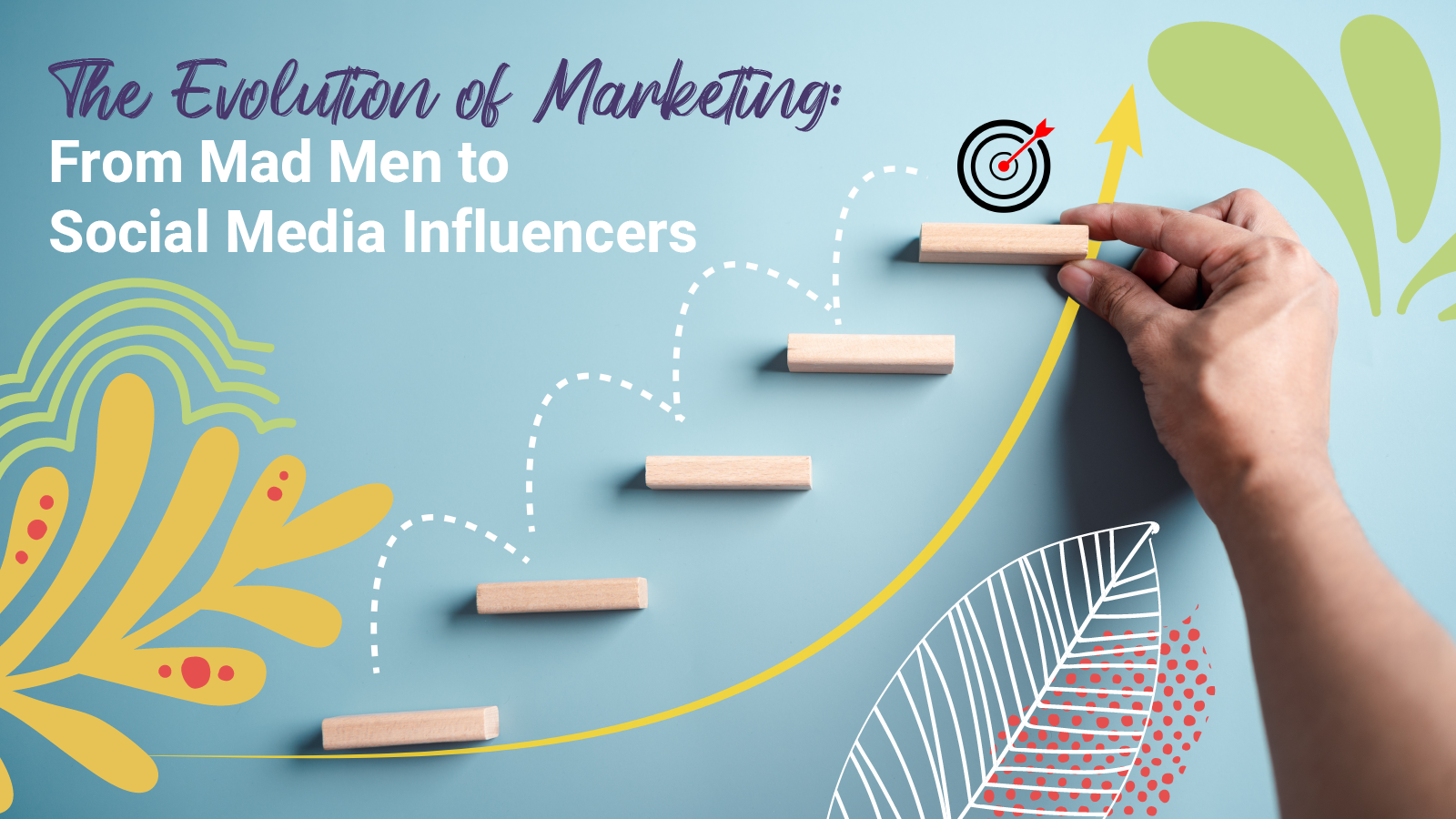Remember the days when marketing executives would light a cigarette, pour themselves a stiff drink, and scribble some creative ideas on a napkin? The time when advertising was dominated by men in suits with slicked-back hair and persuasive charm? The advertising world has come a long way since then. As technology progressed, so did marketing. We no longer rely on billboards, radio and TV commercials, or newspaper ads to sell our products. Nowadays, it’s all about influencers, hashtags, and going viral. In this blog, we will take a trip down memory lane and explore the evolution of marketing, from the Mad Men era to social media influencers.
Mad Men: The Golden Age of Advertising
When we think of marketing stereotypes, we often envision powerful men in suits, smoking cigarettes, and drinking whiskey in their offices. This image is not too far-fetched as the early days of advertising reflected just this. The 1960s is known as the Mad Men Era, where advertisers were competing for clients by coming up with the most creative concepts and irresistible taglines to sell their products. The ad campaigns were designed to target the emerging suburban middle class, and the goal was clear – to make the product look appealing, no matter what. This worked as ads were seen as the means of keeping up with the latest trends, and consumers trusted what they saw in print, radio, and TV commercials.
The Rise of Digital Marketing
Fast-forward to the 90s, and we start to see the first signs of digital marketing. The widespread use of the internet and the emergence of e-commerce helped companies reach a larger audience effortlessly. Businesses began to desperately optimize their content and sites for search engines, leading to the birth of Google AdWords. Advertisers could now pay per click as long as their ads were well-crafted and relevant. As a result, digital marketing became more data-driven and customizable, allowing companies to target specific demographics through personalized campaigns.
Influencer Marketing – The New Trend
Today, digital marketing has evolved and become more engaging with users, resulting in the rise of influencer marketing. Influencer marketing is based on endorsements from popular personalities on social media platforms such as Instagram, YouTube, and TikTok, who have a large and loyal following base. Companies pay influencers to promote their products through sponsored content, resulting in a boost in sales. The trend has been critical for companies to build trust with their audiences as users are often bombarded with traditional ads they don’t care about. Influencers help create a genuine connection between brands and users through collaborations and engaging content, increasing their reach to an ideal audience.
The Future of Marketing
The advertising landscape is constantly changing, and while brands strive to stay ahead of their competition, creatives must have a deep understanding of what their consumers want. However, with the ongoing pandemic, marketing strategies have shifted to online platforms as people have become more virtual. The future of marketing is now shifting towards the virtual world. Brands must focus on building a great online presence and personalized content. Augmented Reality (AR) experiences, AI, and voice search will play a significant role in reaching an audience. The future of marketing is about providing a seamless, engaging experience for consumers that do not feel like they are being sold to.
In conclusion, marketing has come a long way from the days of Mad Men. We’ve moved from billboards to digital, and now to social media influencers, all offering unique and personalized advertising experiences. Brands now face new challenges with a pandemic that has forced many businesses to social media platforms and the virtual world. As marketing evolves, consumers become more selective and expect personalized content that caters to their needs. As marketers, we must remember to stay ahead of the curve and adapt to the changing tides of the advertising world if we want to remain relevant and successful.









